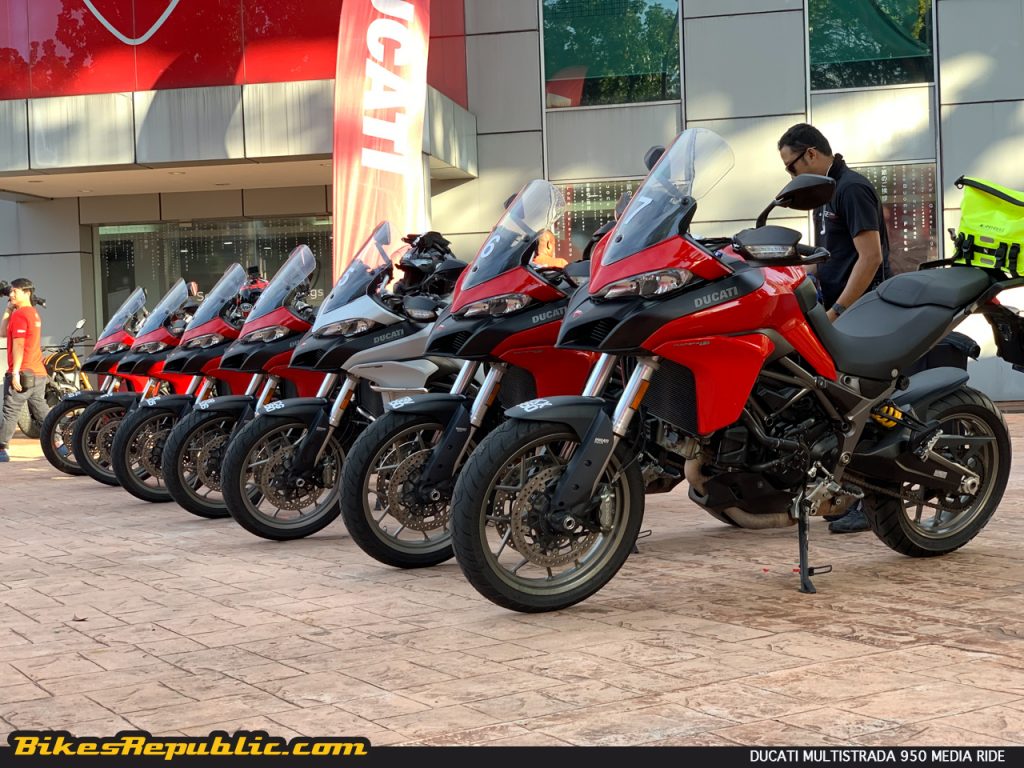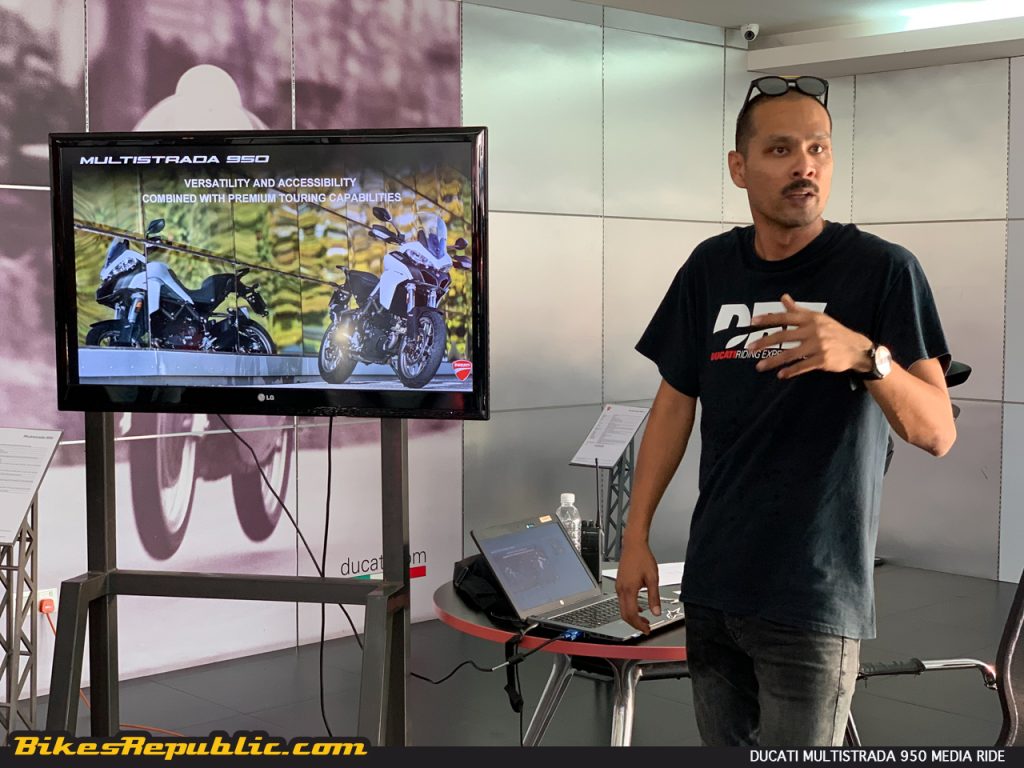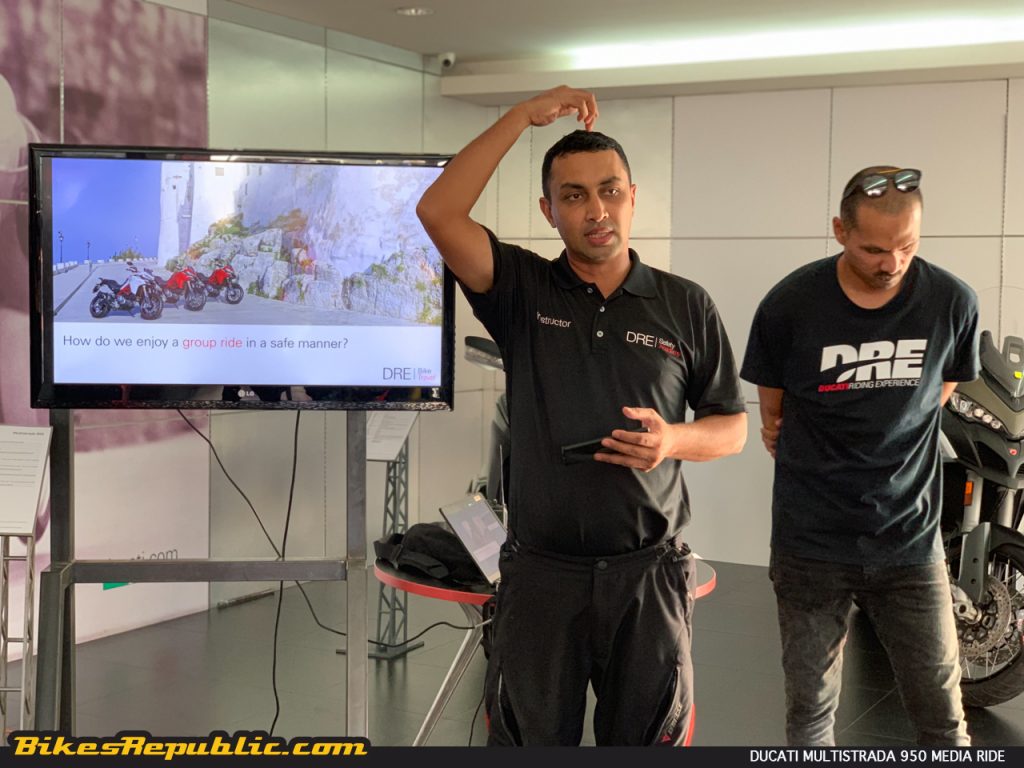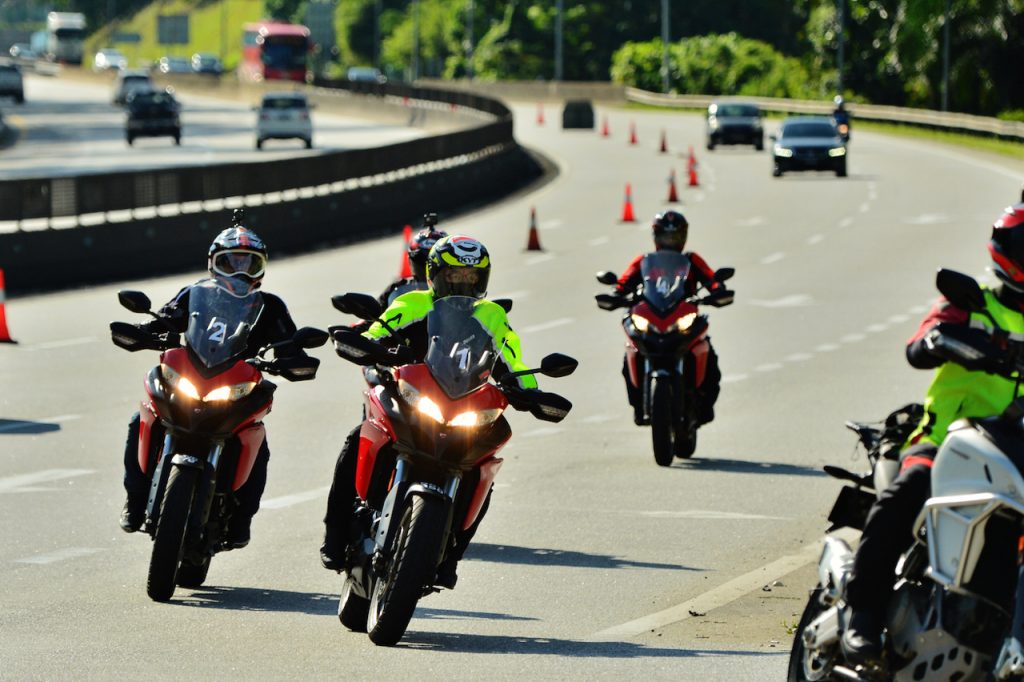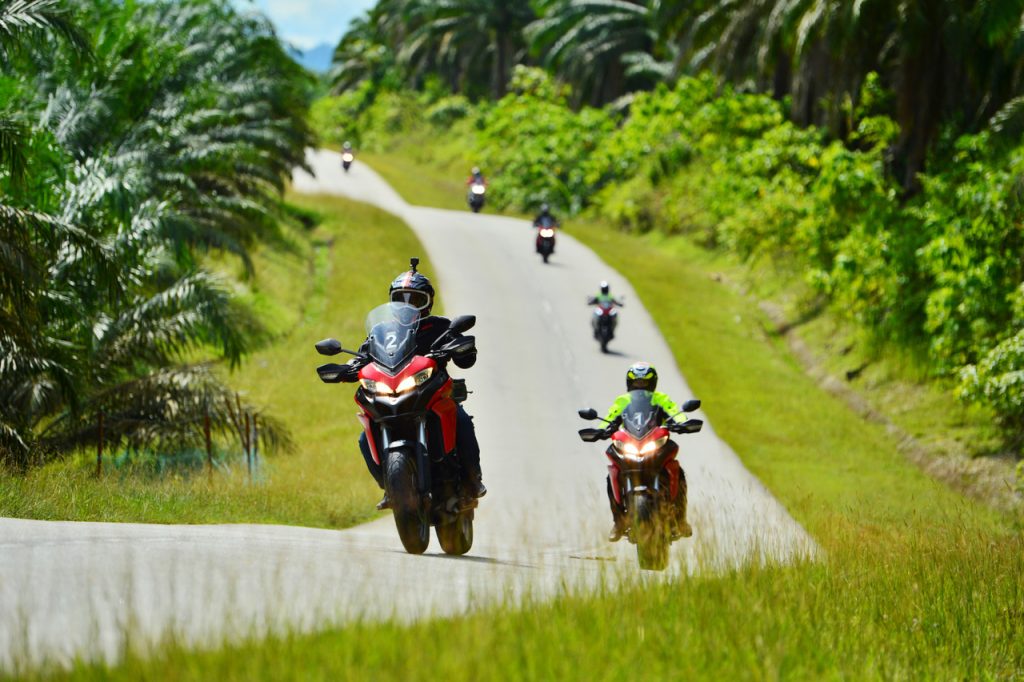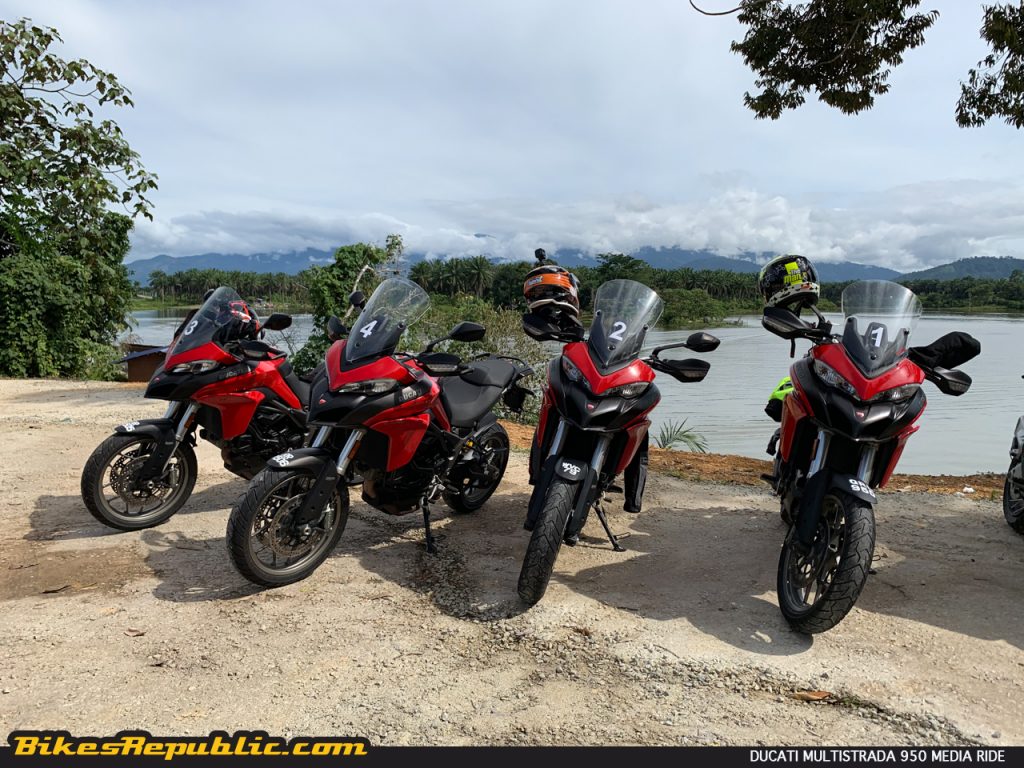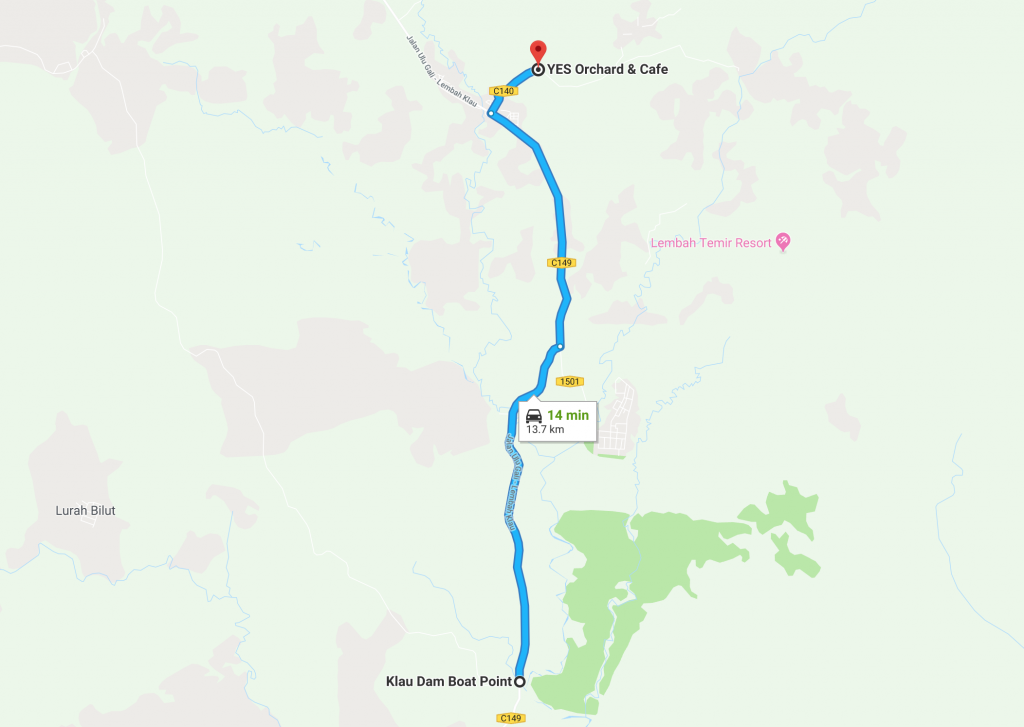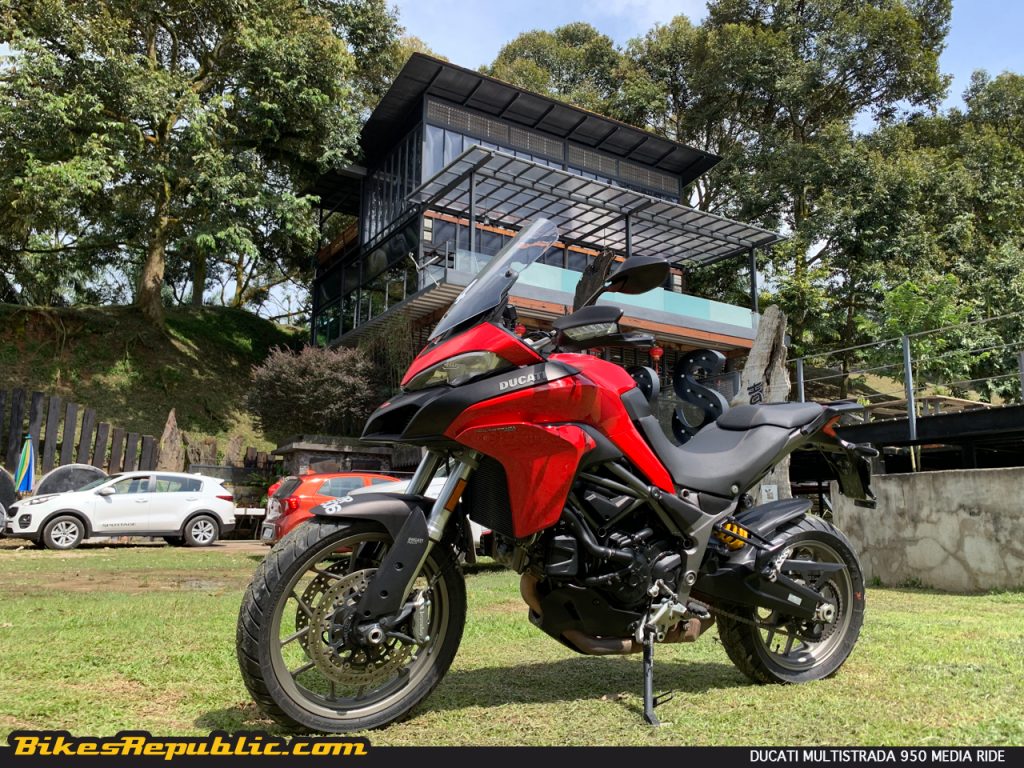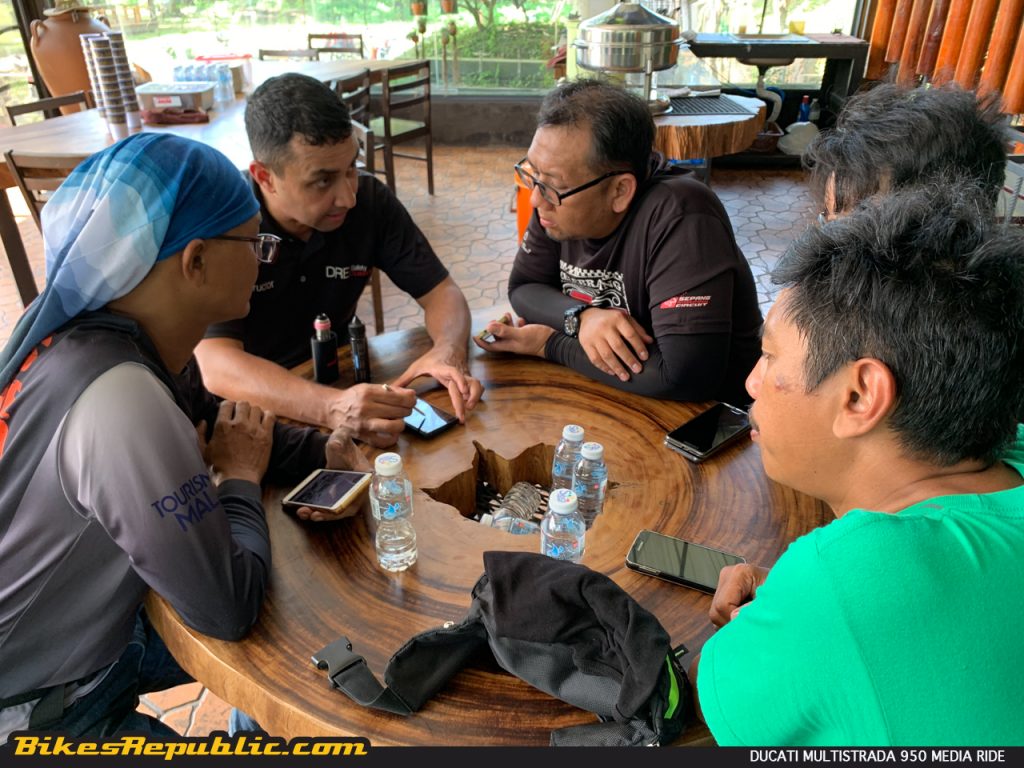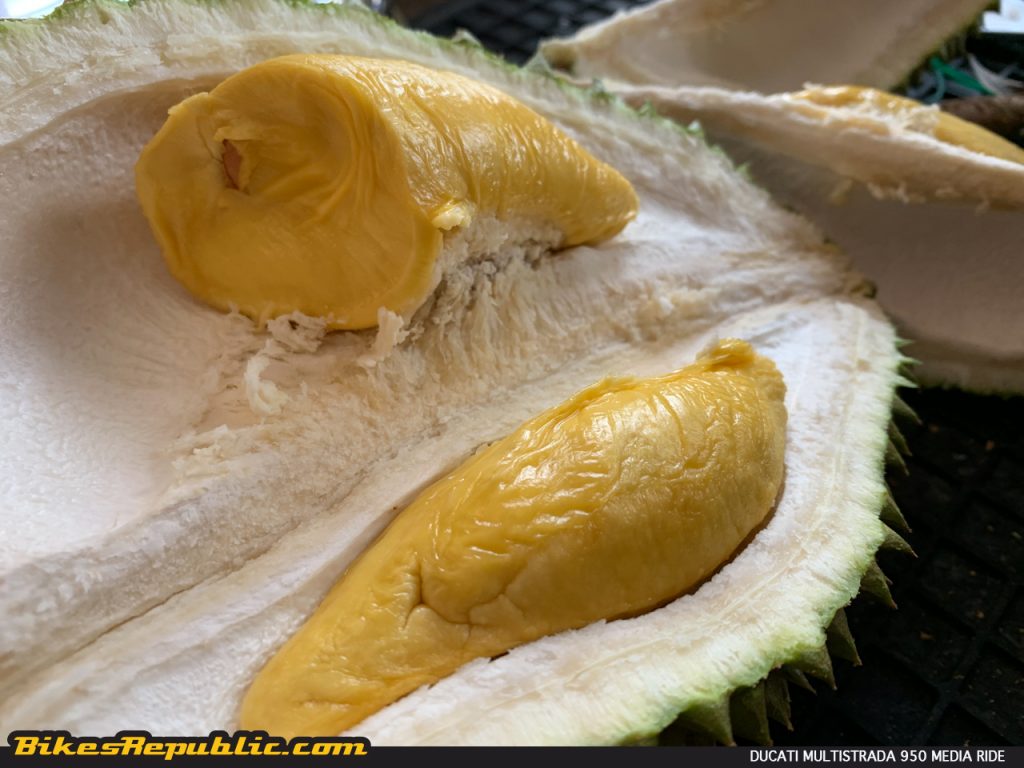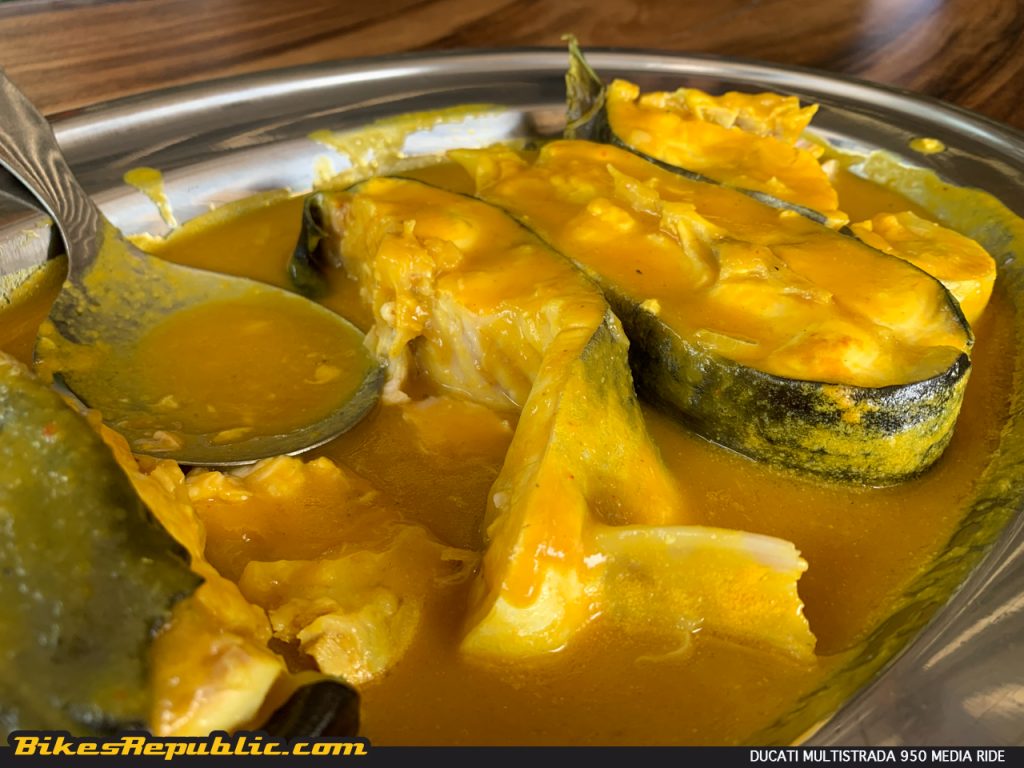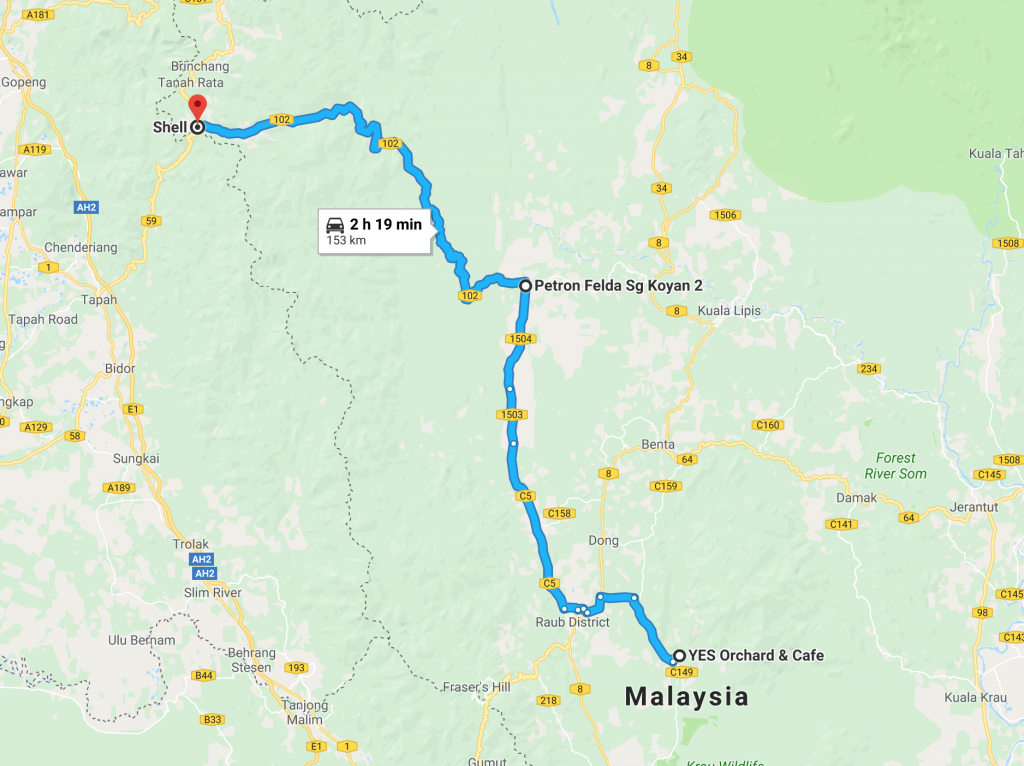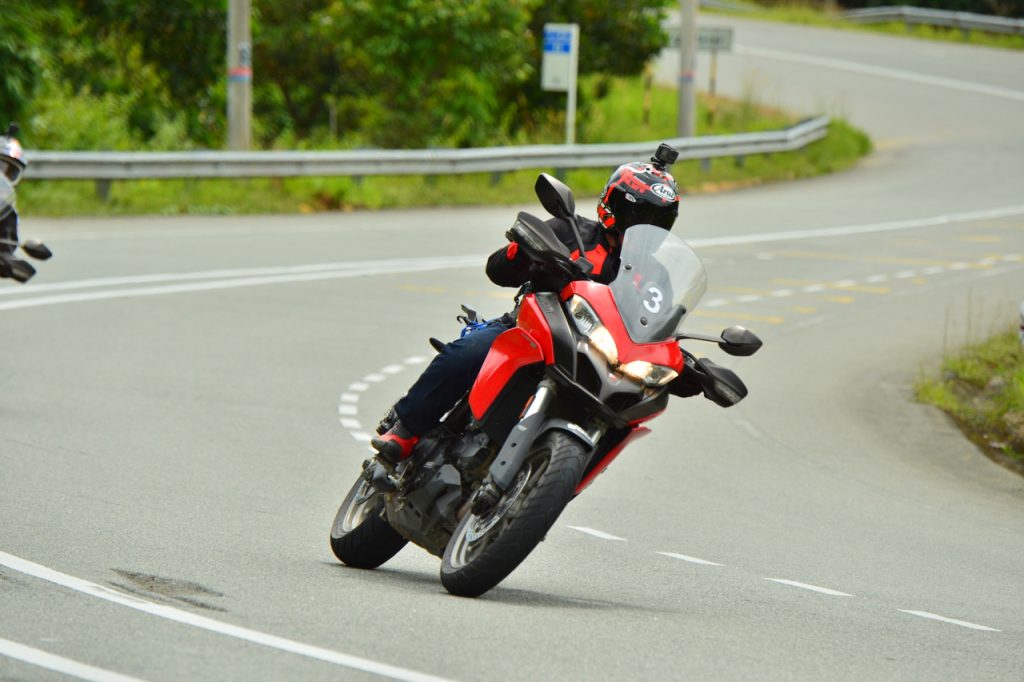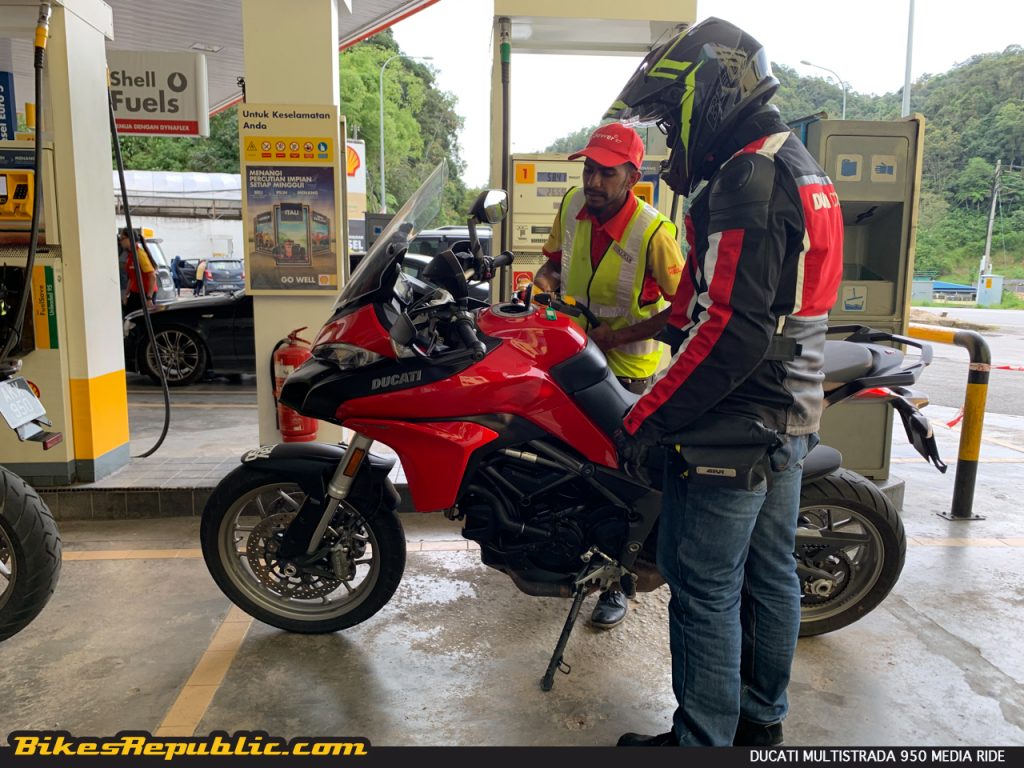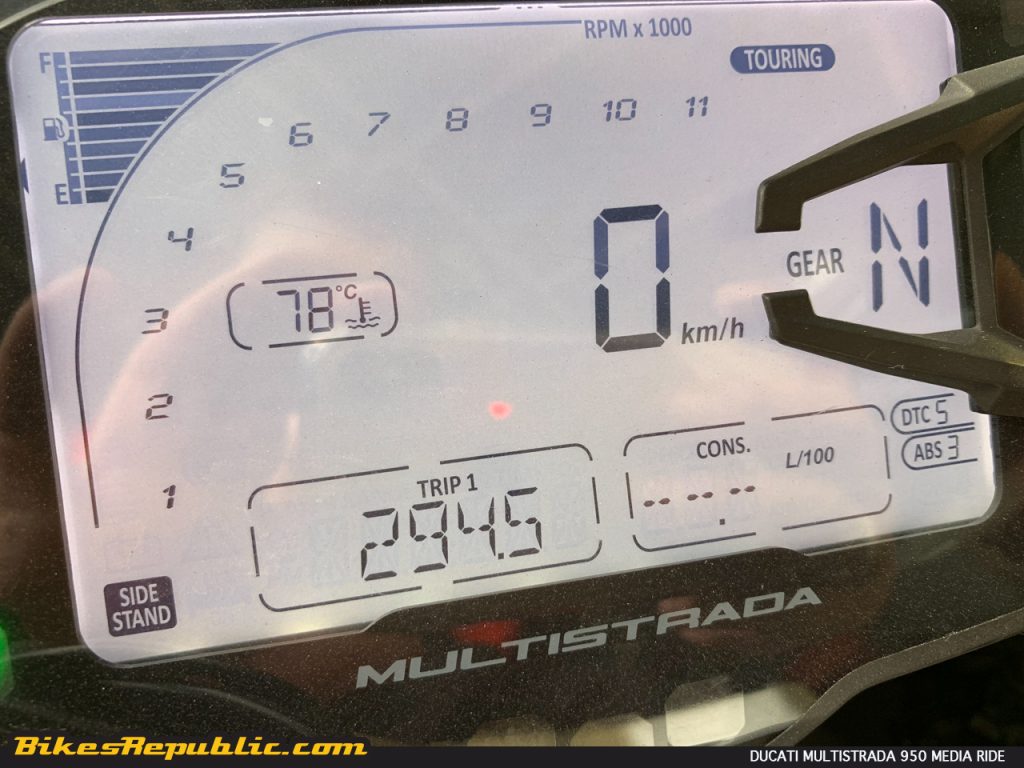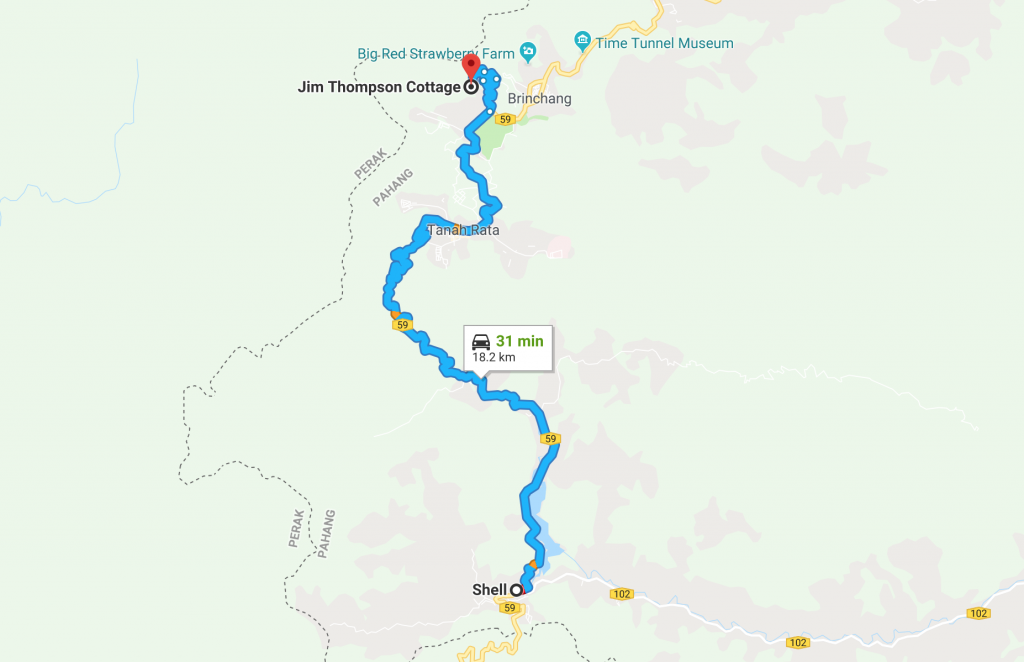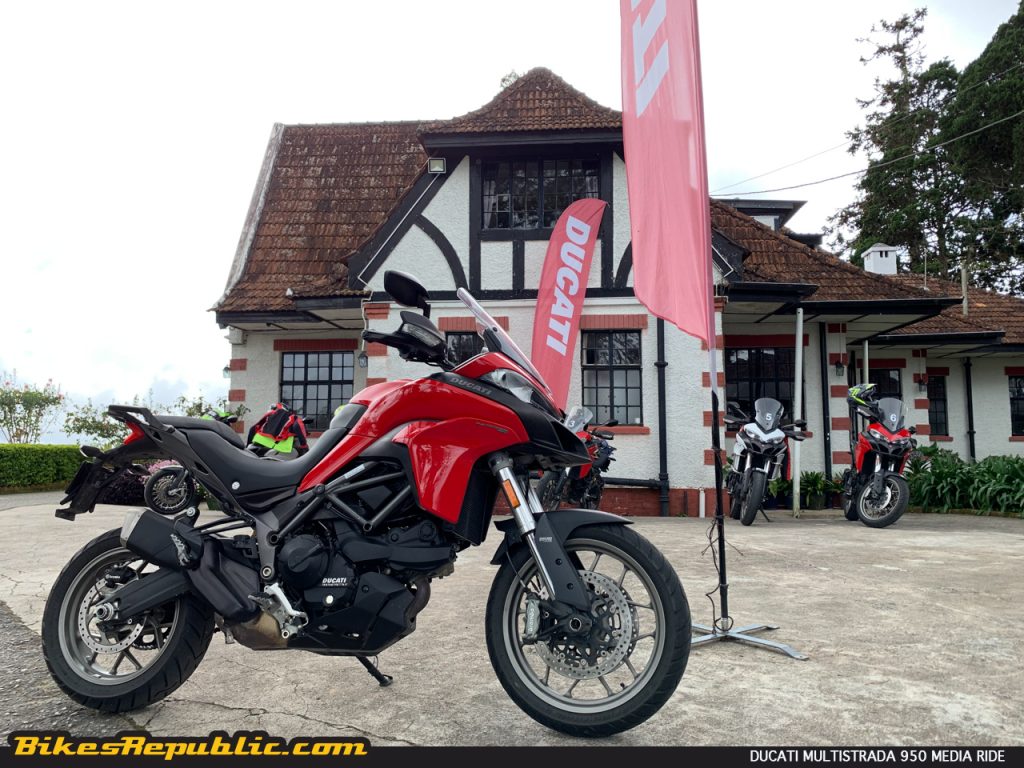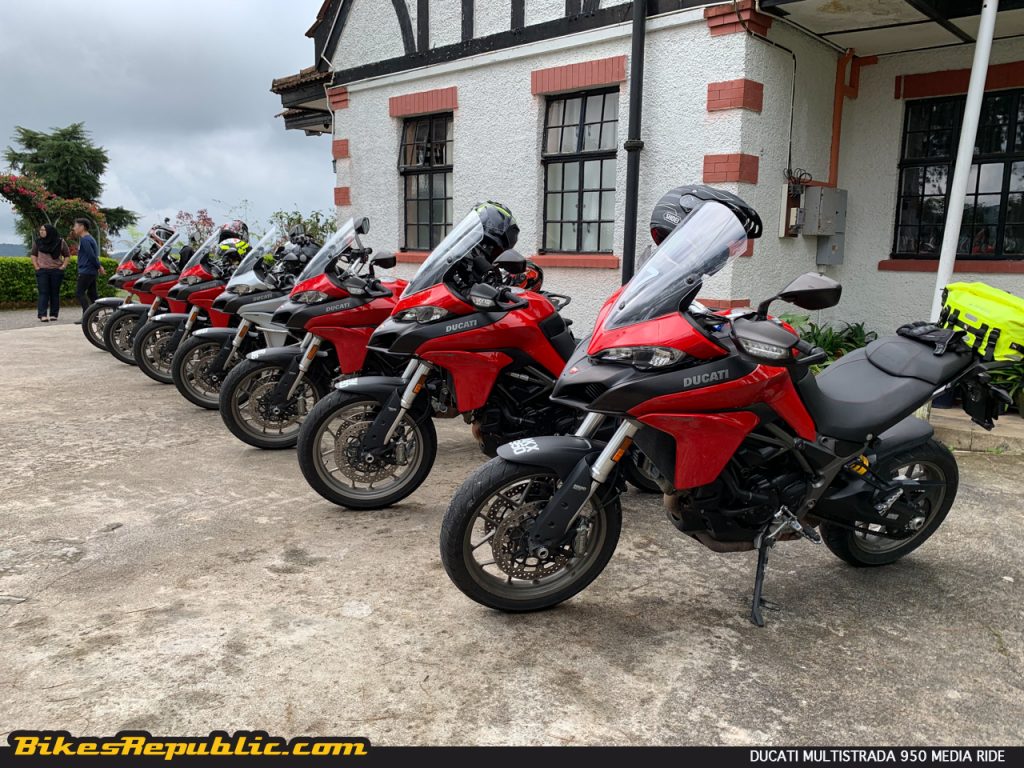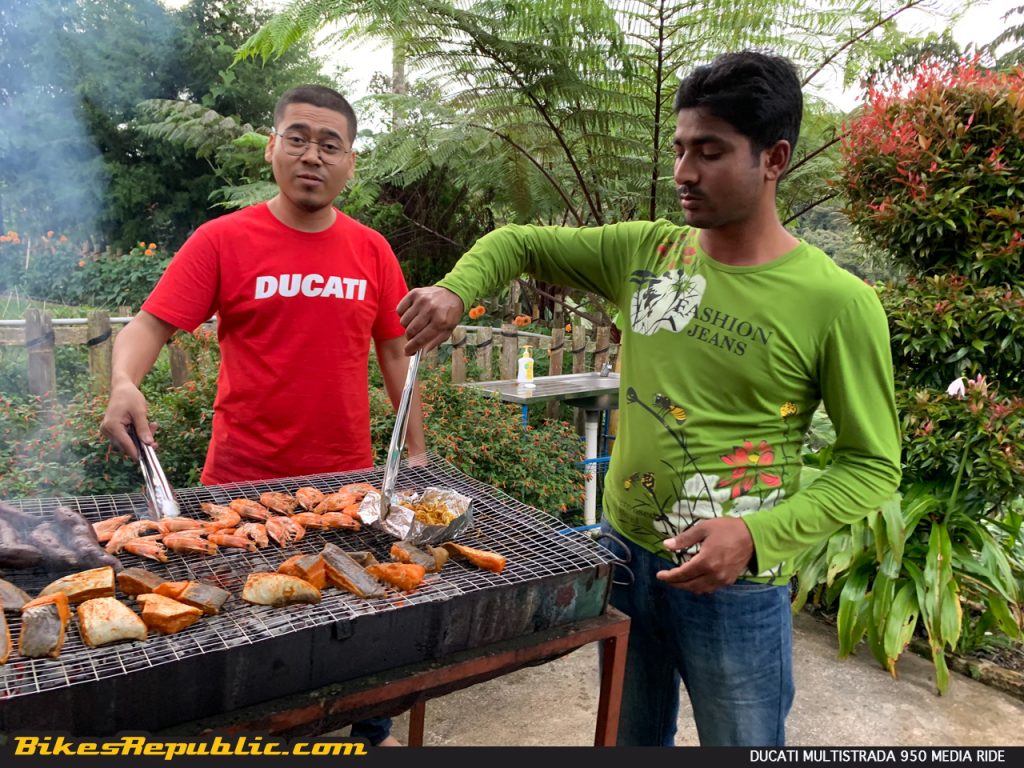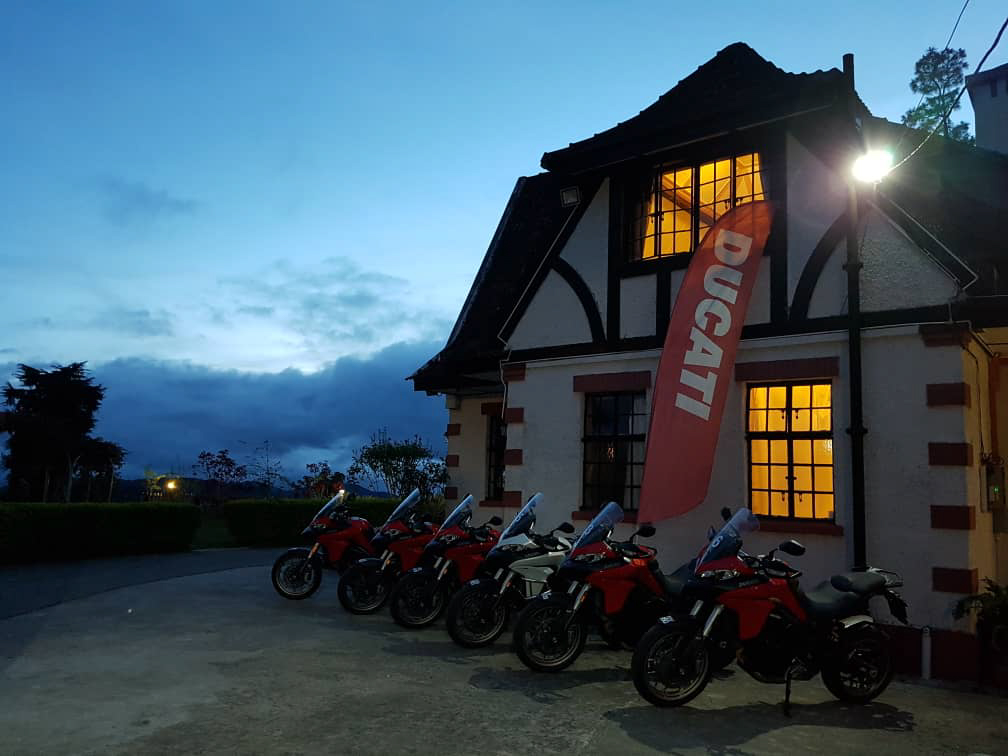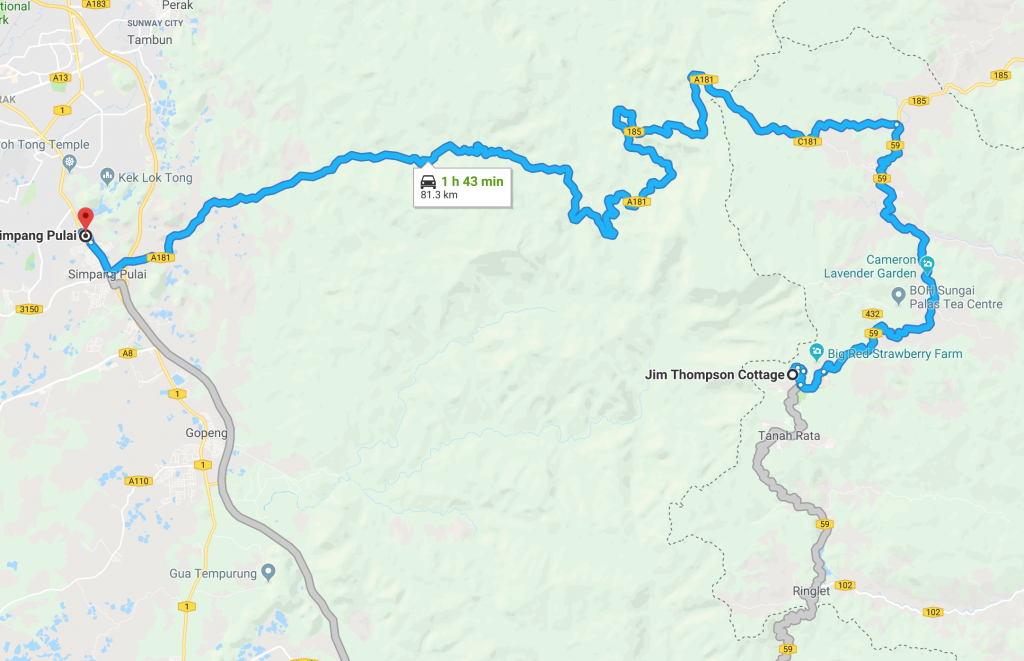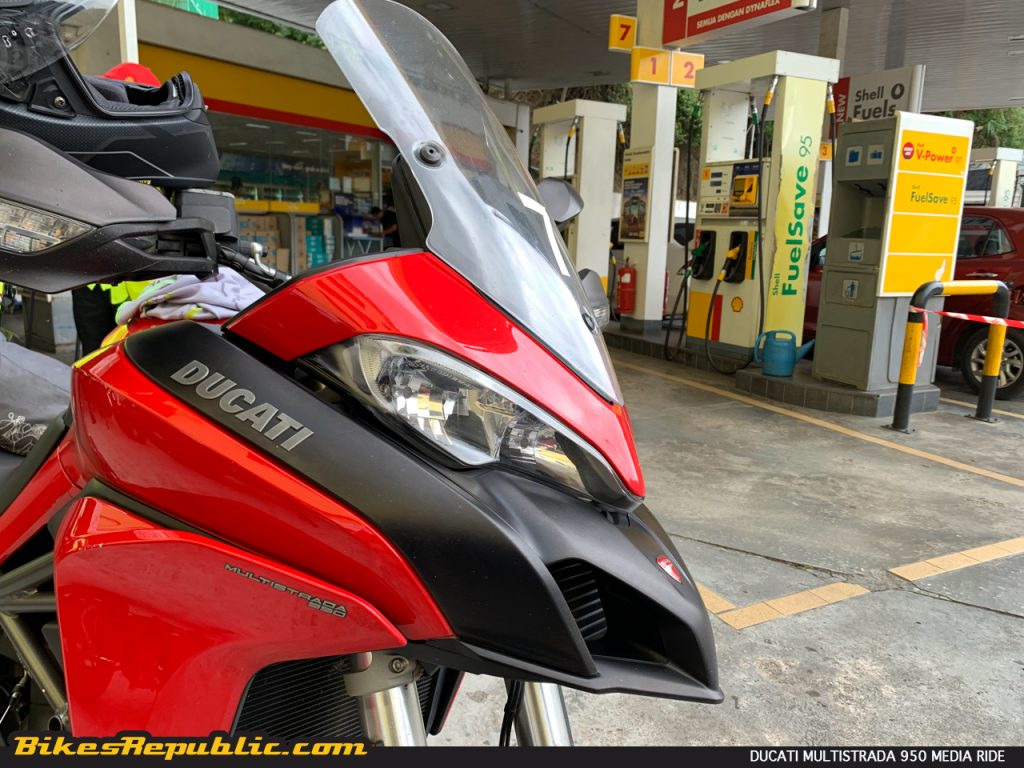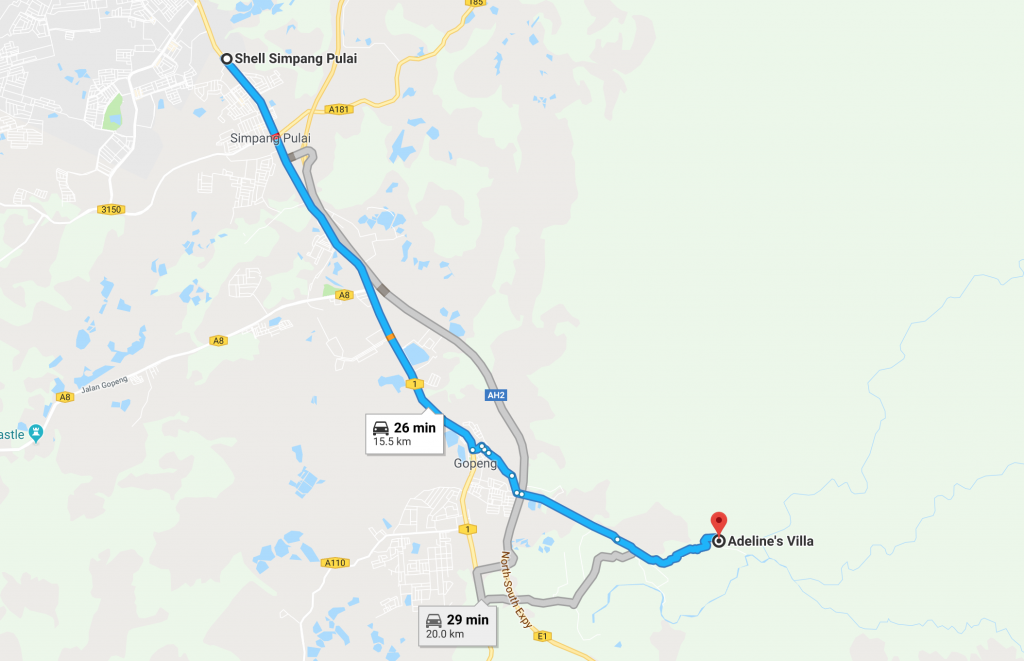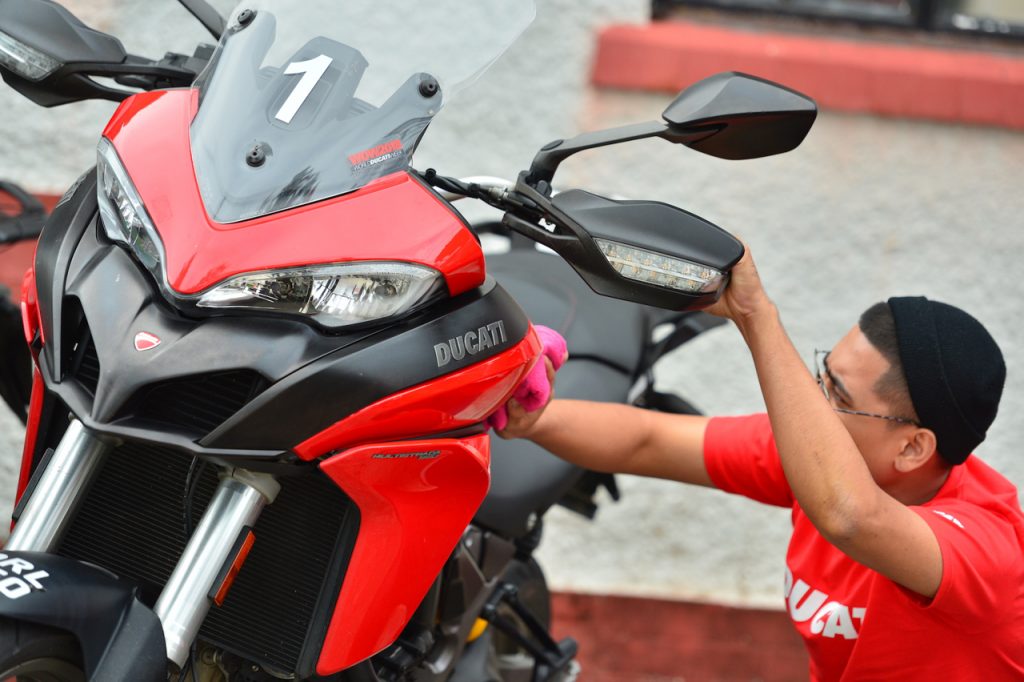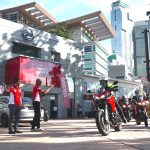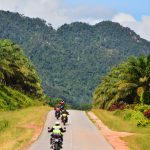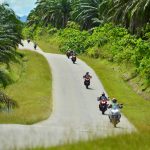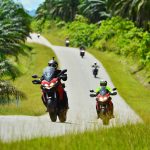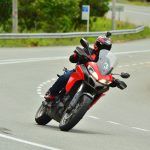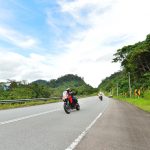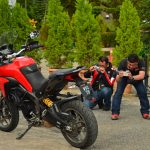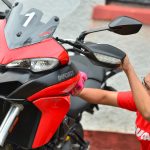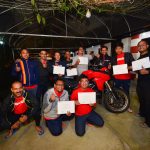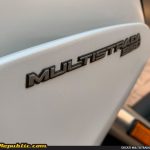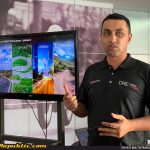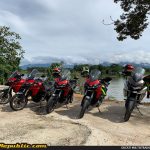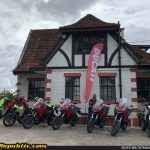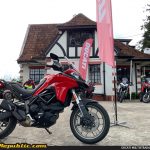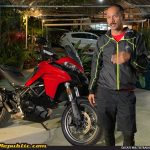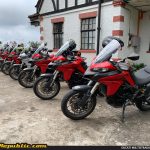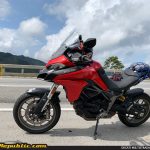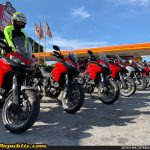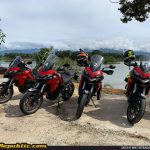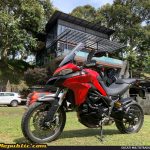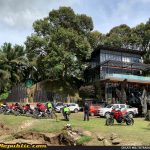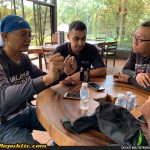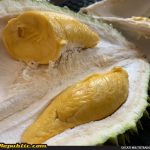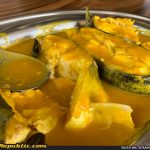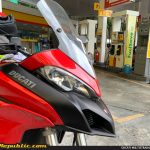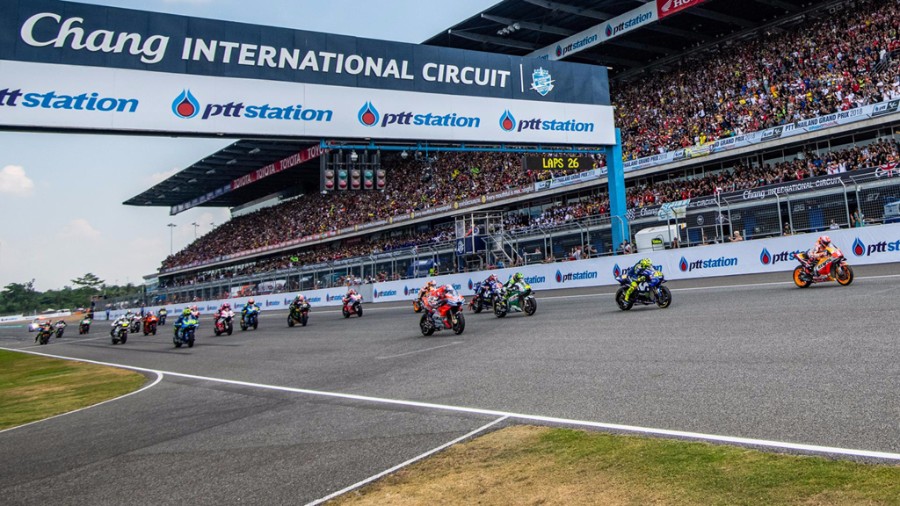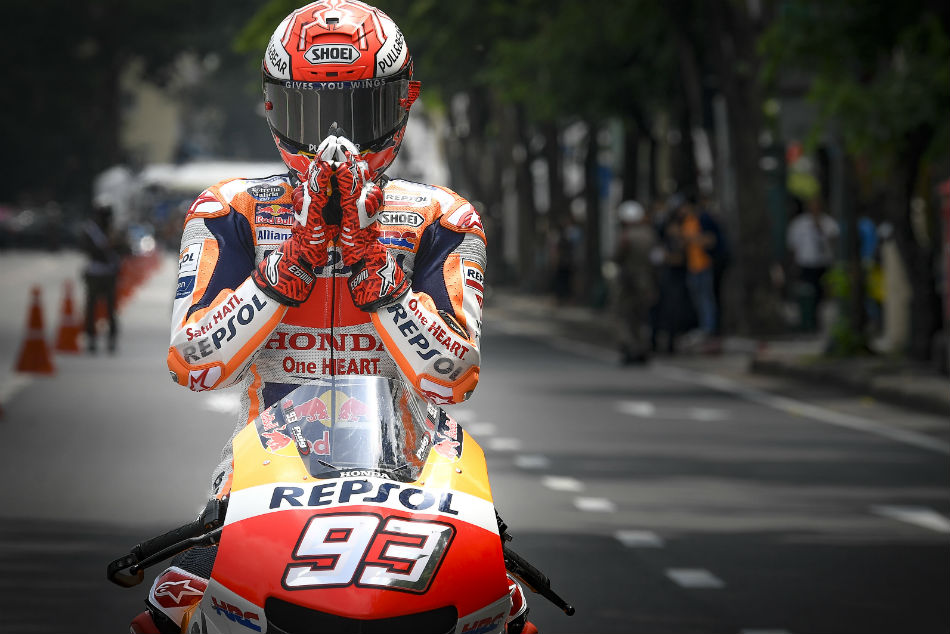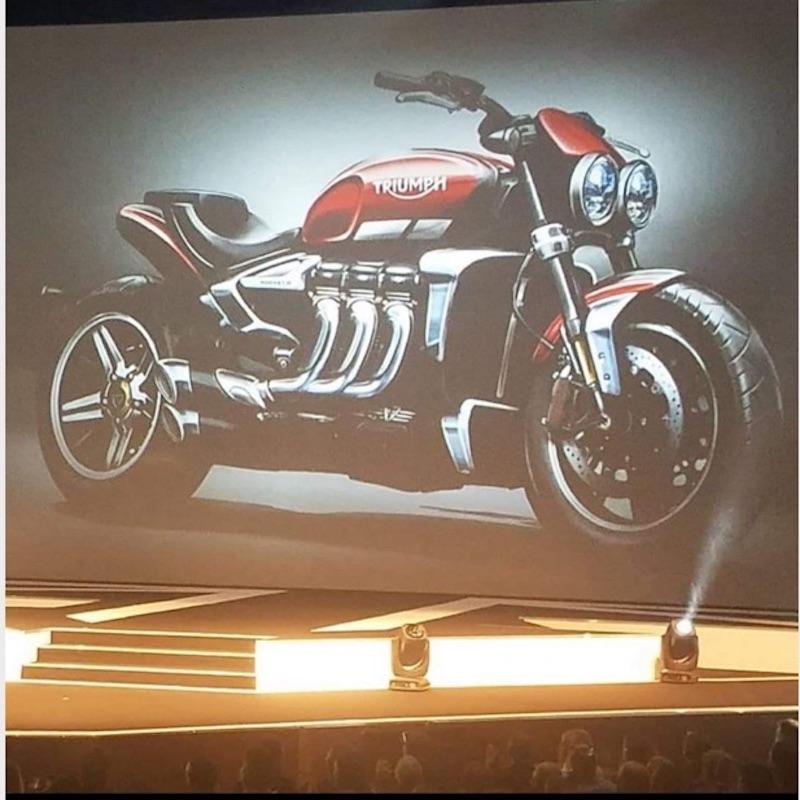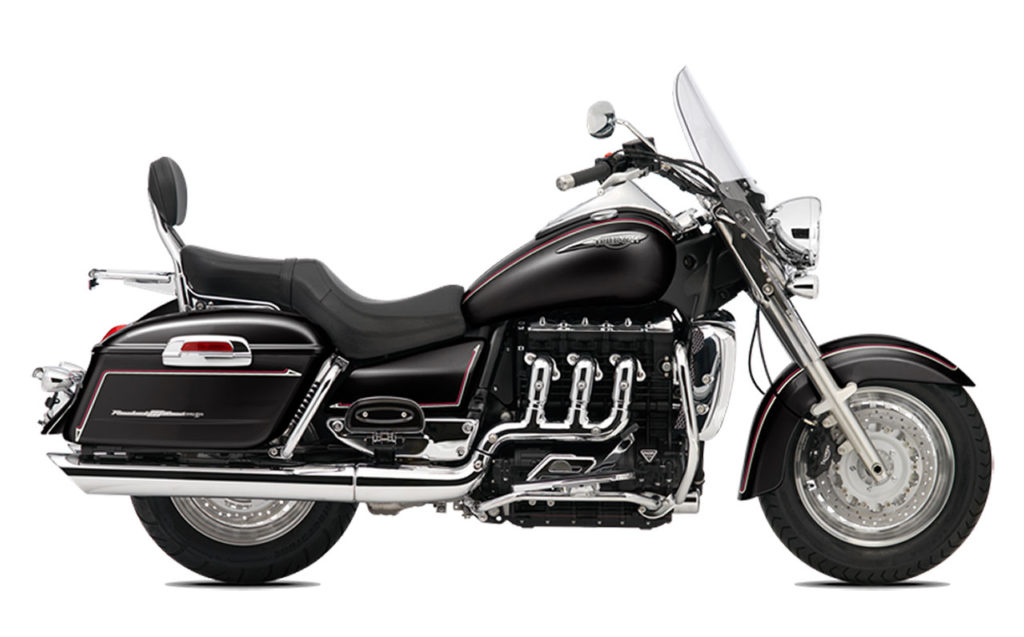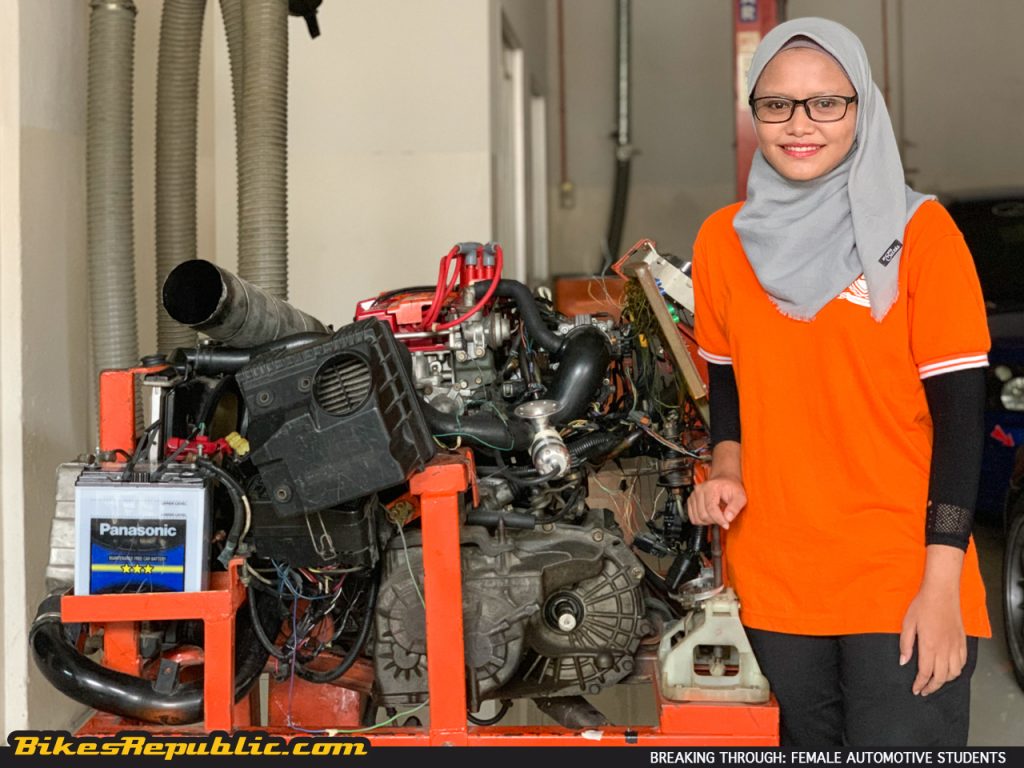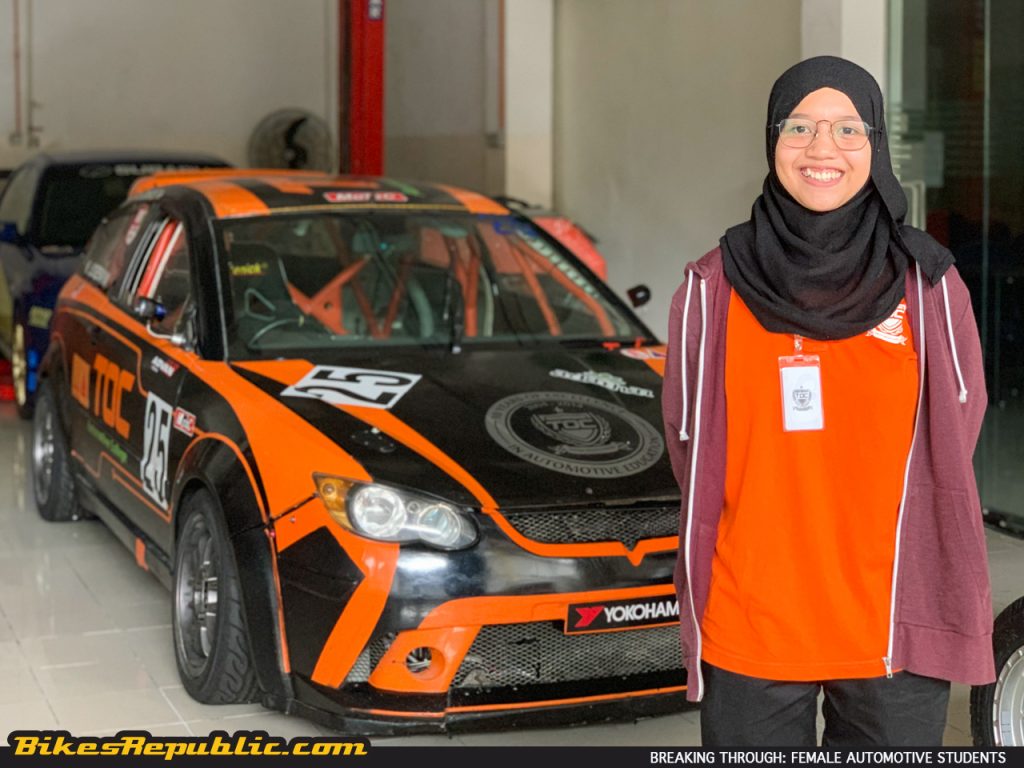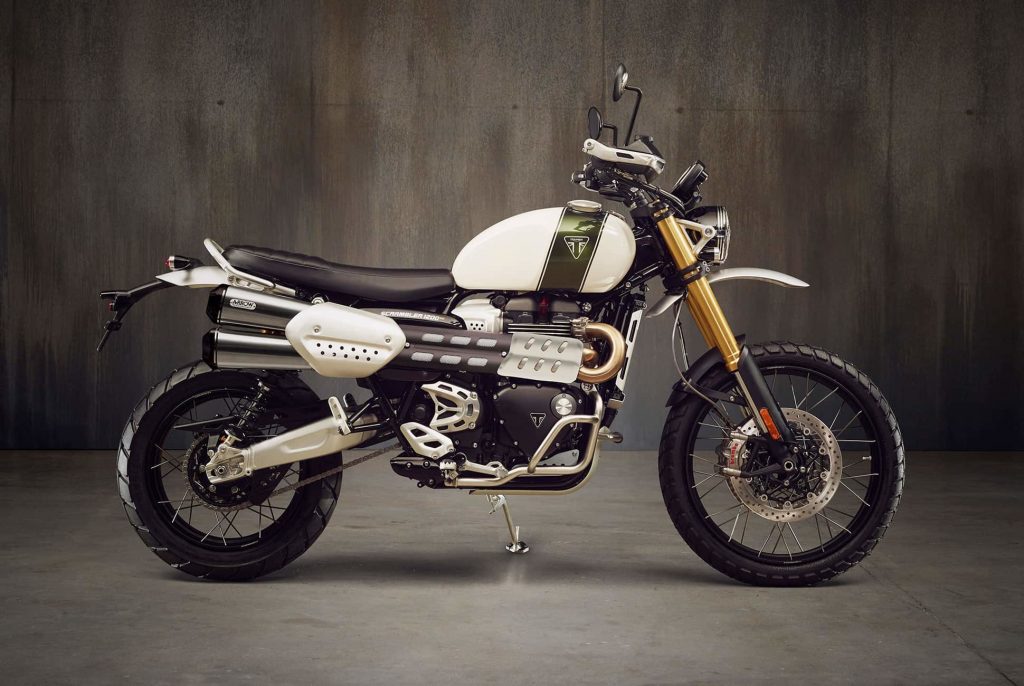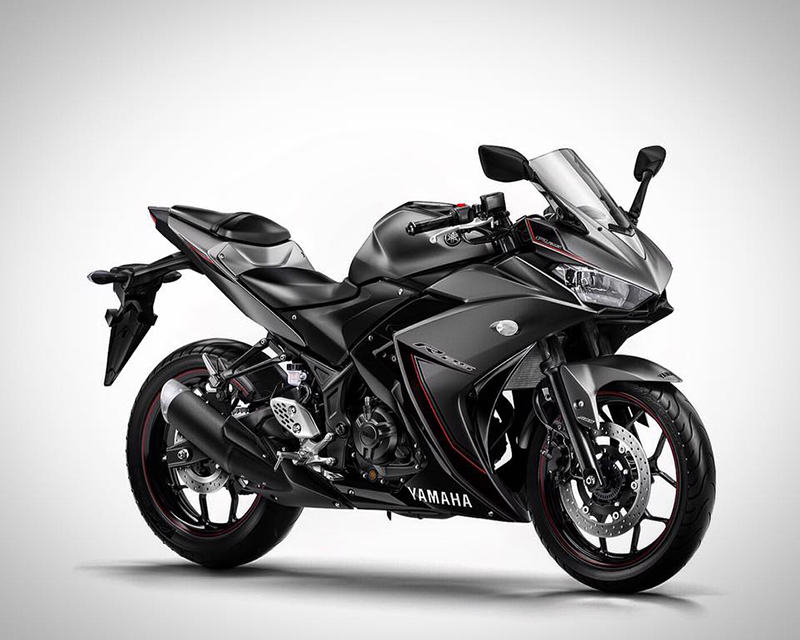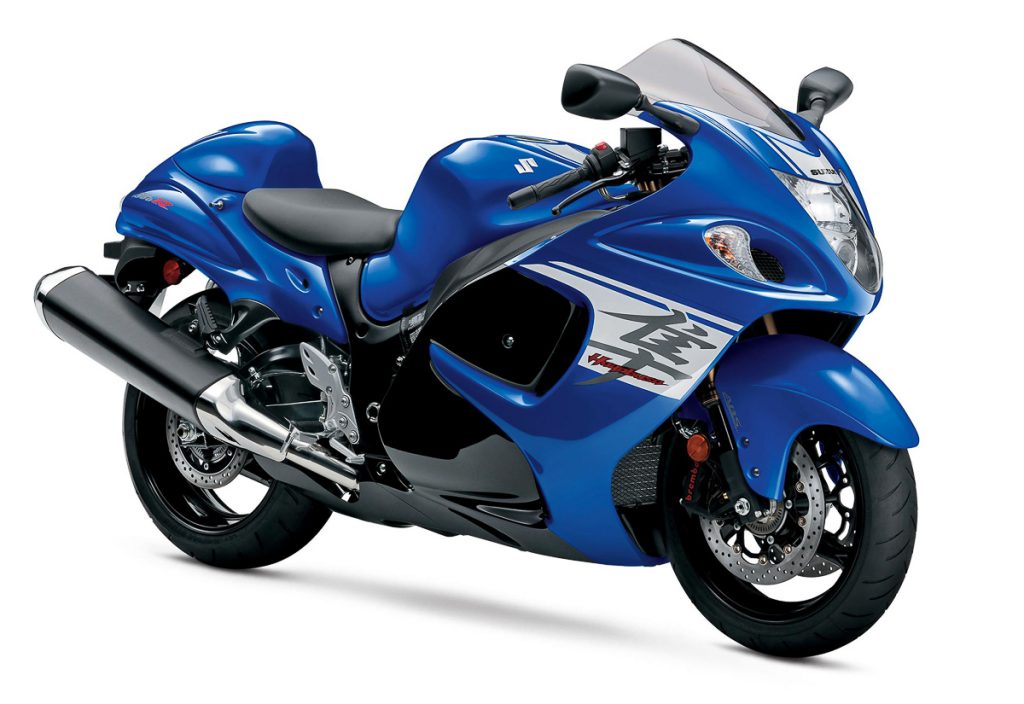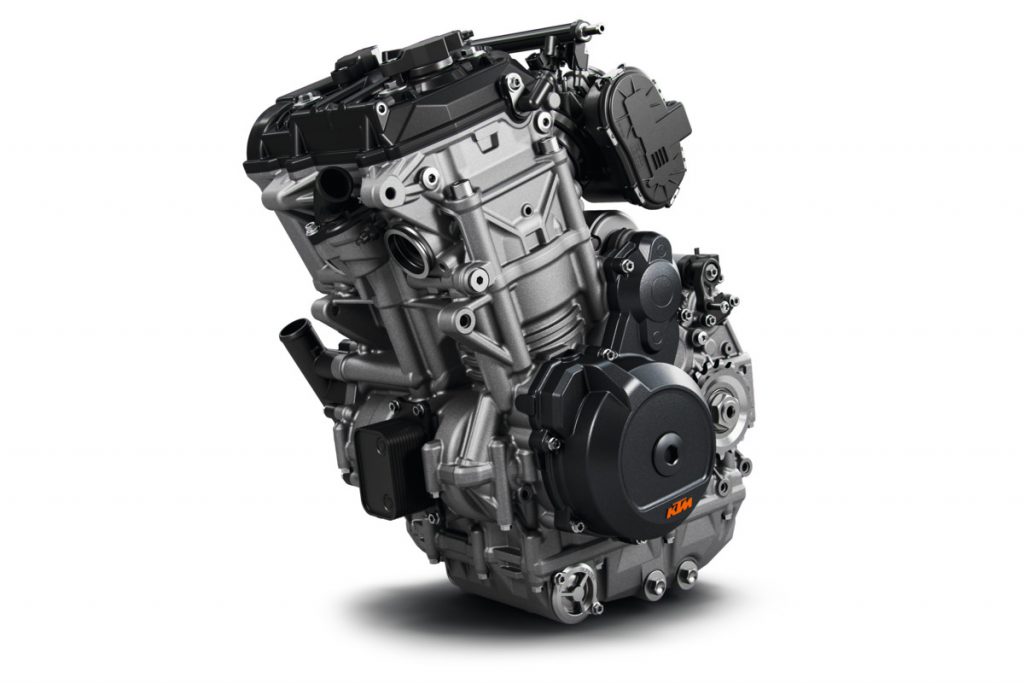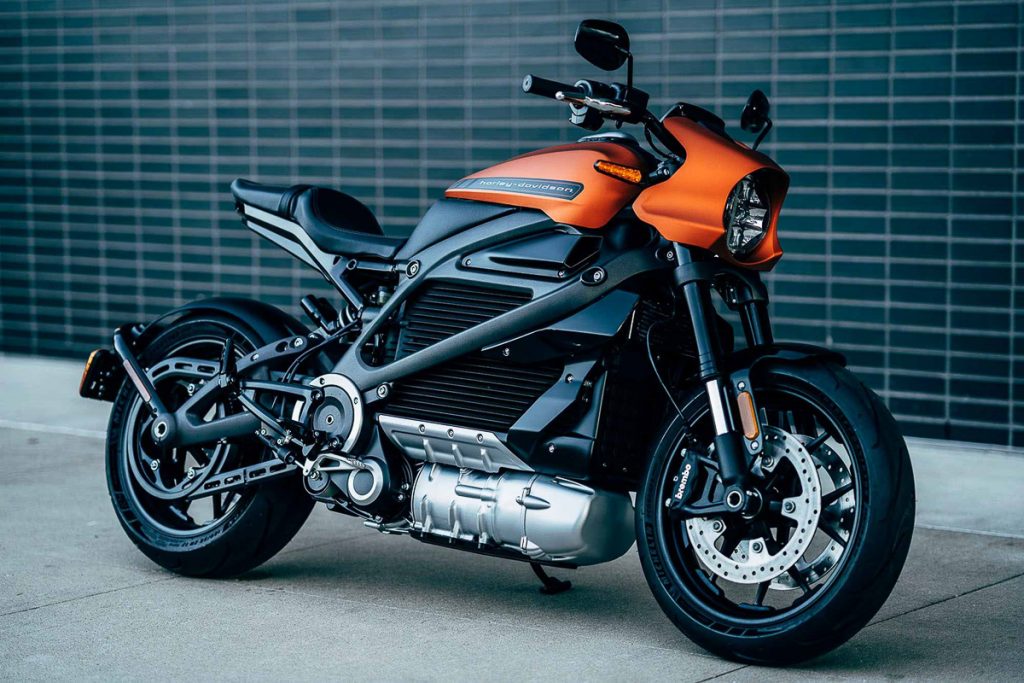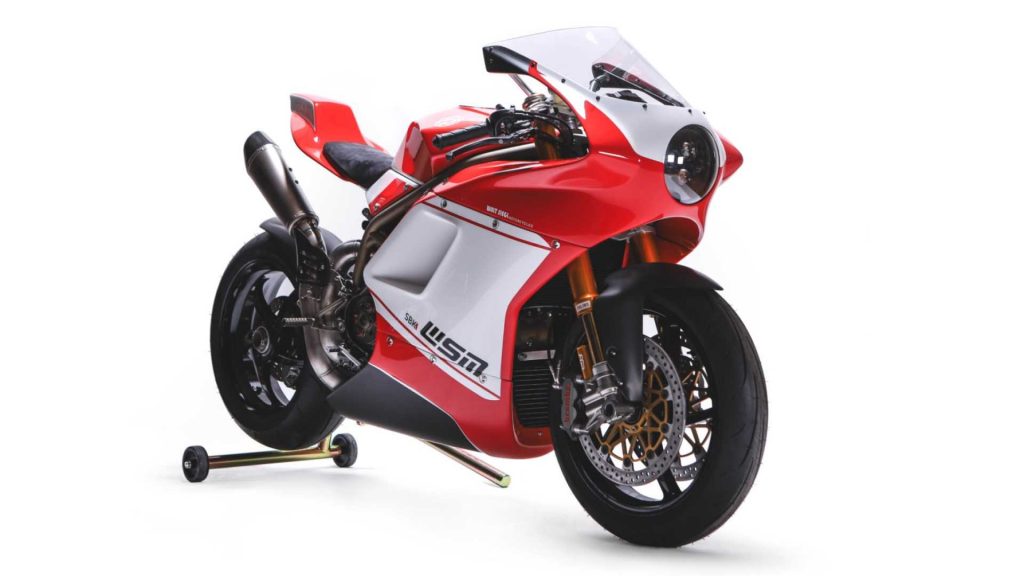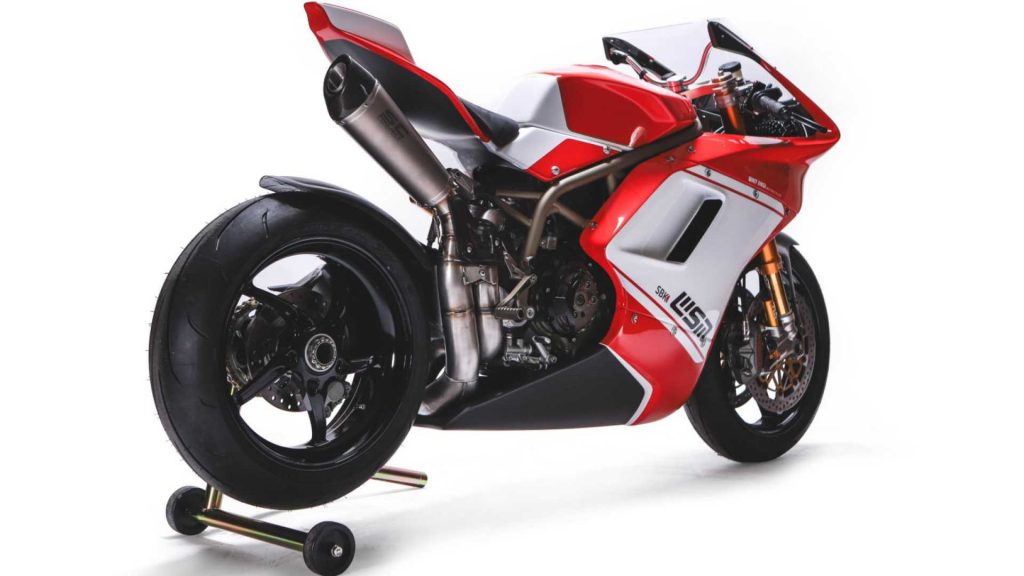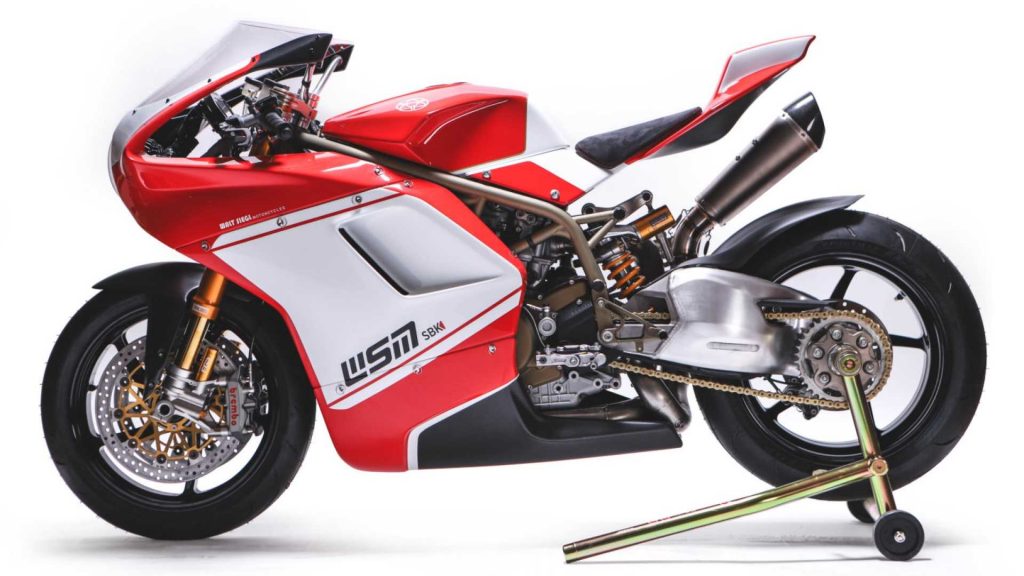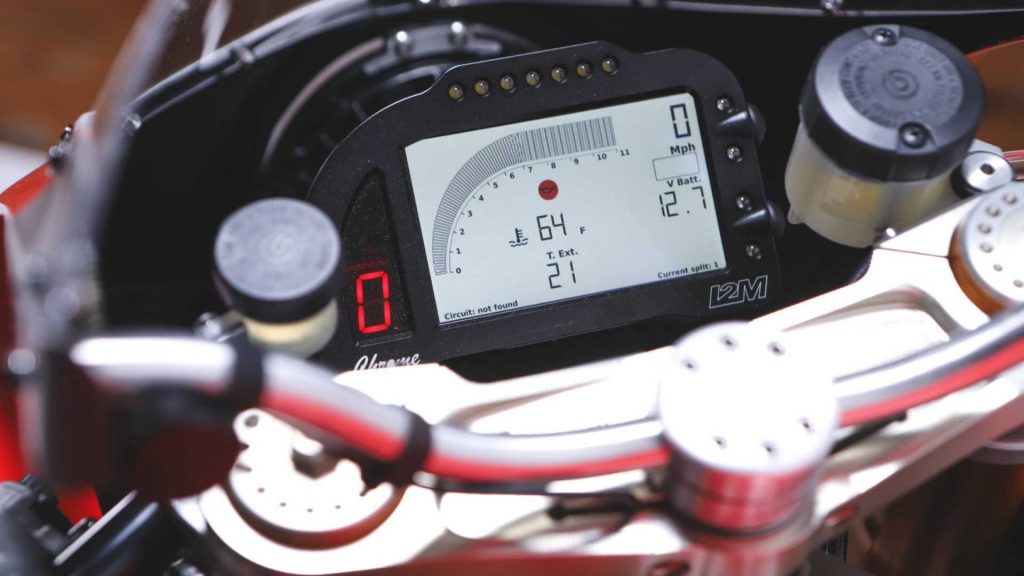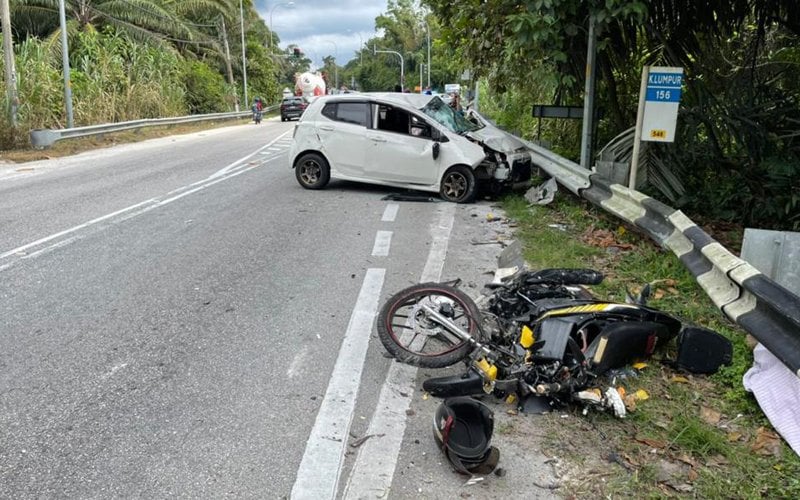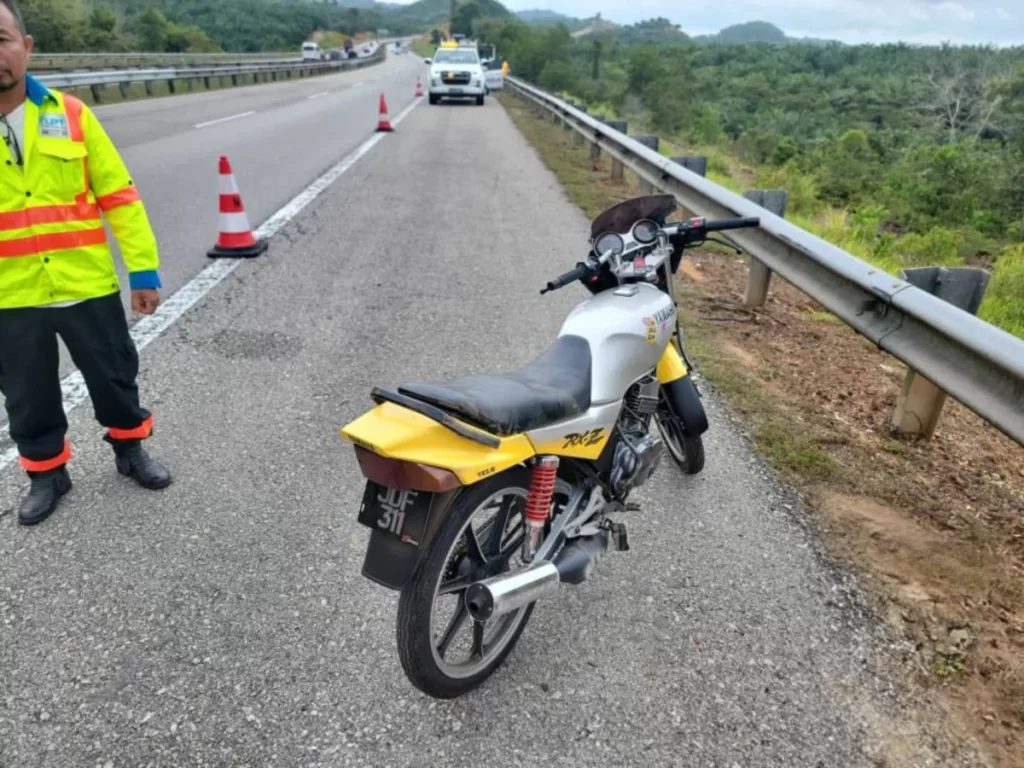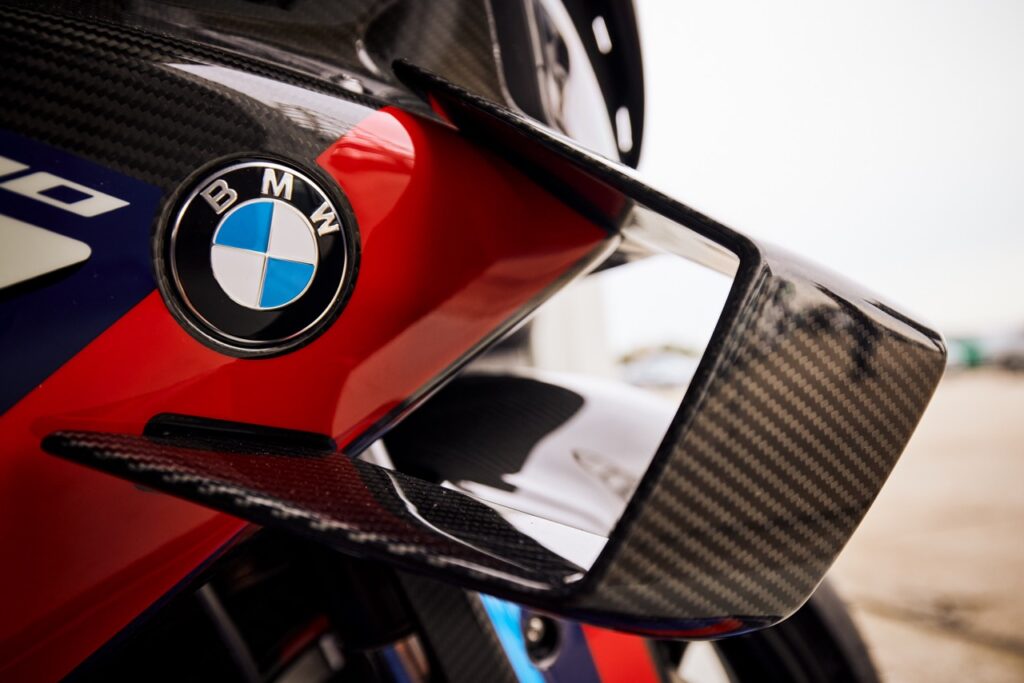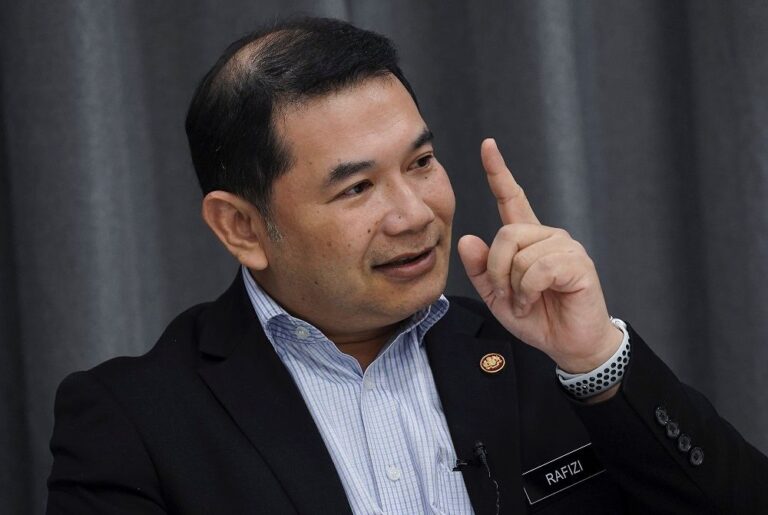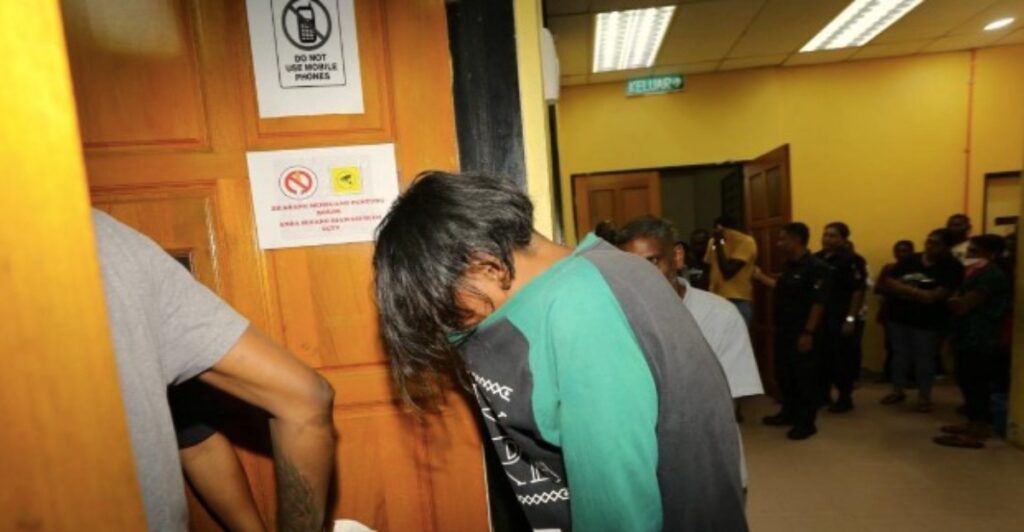-
Ducati Malaysia organized the Ducati Multistrada 950 Media Ride recently.
-
The ride’s objective was to highlight the Multistrada 950’s capabilities.
-
However, the ride gave journalists a taste of the lifestyle attached to the bike.
What’s the biggest fun about motorcycling? It isn’t just the motorcycle, instead it is the entire lifestyle or “eco-system,” that’s attached to it. It was definitely so with the Ducati Multistrada 950 Media Ride.
Ducati Malaysia wanted to highlight the capabilities of the MTS 950, but it was more than just about the bike.
The Gathering
A row of three Multistrada 1200 Enduro and another row of eight shiny Multistrada 950 greeted us in Ducati Malaysia’s compound.
The crew nodded and smiled at us as soon as we arrived. One guy handed us DRE: Ducati Riding Experience stickers before ushering us inside for the registration. The registrar proceeded to assign us to our individual MTS 950 and pointed us to breakfast.
Pre-ride briefing began with a welcoming speech and short product presentation by David Lim, Marketing Executive of Ducati Malaysia. We knew what the MTS 950 represents when it was launch but may have forgotten by now, so it was a great refresher.
Next up was a presentation by Haizal Omar, the Lead Marshal and DRE Instructor. He briefed us by using points from a very famous set of riding tips called “The Pace.”
“The Pace” was written by the famous motojournalist, Nick Ienatsch. It was first published in Motorcyclist in 1991 before being reprinted in the sister magazine Sport Rider in 1993. The sub-heading read, “Separating street from track, riding from racing.” He refined and added a few more tips later and published them as “The Pace 2.0” in Cycle World Magazine in 2013. Many instructors, other motojournalists and even bike clubs refer to it. (More on “The Pace” in another article.)
I had adhered to The Pace (mostly) ever since reading it in Sport Rider while I was recuperating after crashing my Cagiva Mito EV.
The Pace covers the disciplines of road riding, especially in a group. We were split into two groups, led by Haizal and Didi, respectively. They will lead at a pace that’s comfortable for the riders in each group. They will continue to check from time to time to determine each person’s comfort level.
Additionally, Haizal is a certified instructor out of California Superbike School and teaches riding techniques himself. Hence, he will impart his experience and knowledge to us during the ride as part of the Ducati Riding Experience.
Ducati Malaysia also loaned us Ducati-branded riding jackets. Most of them were made by Dainese, although there are some by Rev’ It.
The Ride
We rode straight to the Karak BHP petrol station before continuing down the fabled highway. Traffic was light since it was a weekday.
The Marshal kept the pace up for us to experience the MTS 950. The keyword here, however, was a high pace without feeling rushed. Attempting to banzaicorners will cause fatigue, mistakes and people getting left behind.
Instead of blasting through the turns like it was the Motojournalist GP at Karak Circuit, it was a nice, flowing ride on Tuesday morning.
Klau Dam
We turned off the highway and rode towards Sungai Klau.
This route not only bypassed the busy Bentong town, it was also way more scenic. The narrow road was flanked by oil palm estates until they gave way to the view of a river and small lakes. We could see the Titiwangsa mountain range topped with cotton-like clouds up ahead.
We stopped for a breather and photo opportunity. One of Ducati Malaysia support vehicles had arrived ahead of us, and the crew waved us into a parking area. They handed us much welcomed cold towels and drinks.
YES Orchard & Café
The cafe is off the main road, giving us a chance to do a little off-roading.
We arrived well ahead of time for lunch so the orchard provided a basket of Raub durians to sample. They were huge! But the fruits inside were just as huge once we split the open. Those were the best durians I’ve ever tasted. The flesh was as thick as cake, but super creamy and sweet! (I’ve got a sore throat now as I type this.)
The DRE instructors sat down with us to impart some tips, in the meantime. We were briefed on countersteering, vision, line selection and other important riding skills.
Lunch was served soon after. I’m never a fan of tempoyak ikan patin but this was exceptional! I bet I need to search like mad for something this good in KL.
Sungai Koyan – Cameron Highlands
Probably the highlight of highlights of the ride.
The Sungai Koyan-Cameron Highlands road is heaven for riders who abhor having chicken strips on their tyres. It consists mostly long corners with tight entries. There are a number of decreasing radius turns to up the thrill quotient.
The surface is grippy, but the apexes of many corners have sunk since the dam project. My wife and I were thrown off the seat the last time we came up here on a bike. This was going to be a real test for the MTS 950.
As before, the pace was controlled expertly from the front. We rolled off the throttle early, hang outside the corners a little longer to establish the safest lines, before peeling in late and coming on the throttle a little earlier to balance the bike. There was no full throttle blast, eyeball-popping braking, bike squirming, tyre-squealing corner entries. It was all smooth, smooth, smooth riding. We were riding at a brisk pace yet there was still time to admire the view. Ah, what a pleasure riding at The Pace.
The MTS 950 was fully at home here. A small force at the handlebar was enough to have the bike leaning over. Once on its side, a crack of the throttle settled the chassis and the bike stuck beautifully onto the chosen line. Tightening the cornering arc only needed a slight shift of the shoulder into the corner.
The dips on the road were noticeable, of course but the suspension didn’t threaten to send us into orbit on the rebound.
(You can read the full review of the Ducati Multistrada 950 here.)
Ringlet, Cameron Highlands
It’s true how time flies when you’re having fun. The white-canopied nurseries on the hillsides welcomed us as we approached Ringlet. They look like groups giant UFOs, if the lighting is right.
We rode into the Shell petrol station at Ringlet to top off our tanks. This was the only refueling stop since we left Ducati Malaysia in the morning. We had covered 294km with a balance of 30 km of fuel. That’s impressive considering our pace.
Jim Thompson’s Cottage
From there it was up the mountain to our accommodation at Jim Thompson’s Cottage. It’s situated up a hilltop near the Sultan Ahmad Shah Golf Course.
But, who was Jim Thompson?
American Jim Thompson built this house back before WW2. He decided to go for a walk one day in 1947 but never returned. His body was never found and there was no sign of him anywhere else.
It wasn’t a large bungalow by any means but it was classical with wrought iron doors, heavy wooden room doors, wooden floorboards, wooden staircase, and get this, fireplace in the living room and a number of rooms.
The cottage is now a resort and hotel. It turned out that many auto manufacturers have chosen this location for their functions. Good choice, I say. That’s because there’s a large compound and garden to chill (literally) to the cool air and enjoying the beautiful vista. The “restaurant” is a covered part of the compound.
We checked in to our rooms and we didn’t even close the doors. Instead, we convened in the living room to chit chat. It felt like… home. This was way different than staying in a high-rise hotel where participants hide in their rooms.
Dinner consisted of steamboat and the obligatory BBQ. But we sat and ate together, the media, Ducati crew and Naza employees. We shared stories, laughed at what happened in the ride today (like me consistently failing to U-turn the bike). The atmosphere was so lively that we completely forgot to visit Brinchang town.
Ducati Malaysia and the DRE Instructors handed out our certificates of participation. Additionally, the instructors picked three participants who had adhered to The Pace and convoy riding etiquette.
Cameron Highlands
My roomie roused me at 7.30 for breakfast. The eating area was just outside my window, so I was tempted to order “room service.”
It was a simple breakfast, but we had time to chit-chat again, until it was time to check out.
I don’t think anyone had the heart to leave.
Cameron Highlands – Simpang Pulai
We were surprised by the heavy traffic despite being a weekday. Good thing it was a small convoy, as we did our best to scythe through without upsetting the car drivers.
It was a tough ride, but we soon made it to the beginning of the Cameron Highlands-Simpang Pulai road. We stopped at a vantage point for a breather and some photos. The traffic was noticeably lighter here, except for the opposite lane heading up the mountain. Poor souls.
We hopped back on our bikes after 30 minutes. It was time to clean the tyres.
Again, The Pace was applied and we had a whale of a time riding down this notorious stretch of road. The marshals had advised us to ride loose and look through the turns at all times.
That piece of advice was fully practiced when the Lead Marshal ran through a deep pothole in the middle of a corner. The rear tyre slid sideways but he controlled it so expertly that Amir and I didn’t even flinch. Kudos.
We got down to the hot and dusty quarries of Simpang Pulai soon enough. Too soon. We weren’t tired in the descend but our energy was soon sapped by the heat.
We stopped at a Shell station to refuel and headed to lunch at Gopeng.
Adeline’s Villa
Adeline’s Villa is located in the eco-tourism area near the Geroh River. The main buildings in the resort are wood huts with thatched roofs. American troops in Vietnam named these type of buildings “hooches.”
We had another wholesome meal here despite being fully aware that we’ll be drowsy afterwards… But how can any “normal” Malaysian resist food?
There’s a surprise at this resort. Diners are required to wash their own dishes after eating. Hmm… that’s “novel.” However, before you yell “forced labour,” the food here was great. The vegetables and meats were fresh and juicy.
So, we did our dishes and suited up for the trip home. The sun was beating down on our heads at that moment and our eyes looked more like the slit between the cam lobe and shim. Yet we frowned at rain clouds in the distance.
The highway had slow traffic in a couple of spots due to road construction but was otherwise clear. It was a brisk ride, we covered the 188-km distance to Ducati Malaysia in just over one-and-half hours.
Conclusion
Having the opportunity to sample the Ducati Multistrada 950 was already fun itself but the entire trip made it extra special. The organization was top notch, and everyone carried out their tasks professionally. For example, the Ducati crew were cleaning our bikes while we joked and laughed ourselves hoarse. A few guys went around checking the bikes from top to bottom and made adjustments while we were at breakfast. The support crew were always (somehow) ahead of us at the stops to help us park the bikes and offer ice-cold face towels and drinks.
The management crew were always on hand to answer our queries or listen to our critiques. The DRE Instructors Haizal and Didi were always on their toes to impart their hard-earned knowledge.
Well done, Ducati Malaysia. Keep up the great work.
Please contact Ducati Malaysia for more information on the Multistrada 950 and other Ducati models. The dealership can be reached at 016-2291533. You can also follow the official Facebook page.
PICTURE GALLERY



